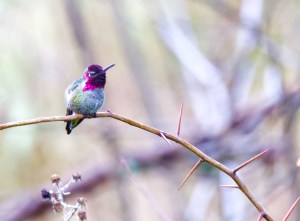Garden Mind Managing mollusks is a war of tolerance and attrition
Published 1:08 pm Tuesday, June 2, 2015

- Slugs form a “slug ball.” Parent slugs practice division of labor in their slimy slug nursery.
Be grateful if your garden — or yard — benefited from a pre-summer spruce-up over the past holiday, because the rain and cool weather is now making for glorious mayhem. Some of us rejoice with this, others fume and act out at Nature’s exuberance.
Trending
Weeding 101 — Weeds lose much of their volume once pulled up, making a much smaller pile. My process is to weed, transfer to a bigger container (wheelbarrow or garbage utility can), then move away from the area I’m cleaning. I use a bucket or 20-gallon pot when weeding, haul from bed to bed; some goes for green manure, some to compost.
Know the growth habits of both weeds and desirable plants — make them work for you. Try to pull weeds before any flower parts ripen and scatter seed and you’ll be miles ahead of future weeding. Also, grass weeds, which put most energy into making seed heads, are easy to pull now.
Save weed bits for greens for your poultry. We have good resources for raising poultry on the Peninsula; another good on-line resource is Mcmurrary Hatchery: www.mcmurrayhatchery.com.
Trending
Recently I peeked inside an inverted pot and was horrified to see a colony of snails and some thick black cousin slugs lazing about in the slimy remains deep in the weeds; ah, happy as clams. I wasn’t prepared to do more in the Control Department just then, so I covered them back up, and went for my Sluggo™, a pet-safe chemical that targets the brethren of this one-footed mollusk tribe.
What is your reaction to one-footed mollusks? Is it horror, like mine? Do you reach and toss them in the street? If you are lucky you have ducks, toss them to the quakers.
My friend Robert Michael Pyle, Wahkiakum entomologist and author, once suggested that the most humane way to dispose of slug/snail cousins is to collect them and put them in a paper bag (labeled and dated) and let your freezer put them gently to sleep; just be sure to label the bag. According to Mr. Pyle, slugs too are sentient creatures and deserve an honorable and gentle end; the freezer slow-death is a solution we mostly adhere to. DO NOT MISTAKE THIS BAG FOR STIR FRY BITS; LABEL CLEARLY.
Other less benign methods (pick your poison) are cutting them in half with garden shears, using copper barriers which create an electric shock of sort because of an interaction with their mucous trail, and a myriad of poisons.
But beware: many poisons are toxic to your pets and wildlife, so use them with great care. Personally, I have never tried saucers of beer — a great and popular concept — as beer is in high demand by the humans in our household. Besides, you have to pick the dead ones out…
One more thing: Make your peace with these essential garden composters. Get a few chickens, if your city allows it, and let them do clean-up. Learn to be aware of the habits of all garden denizens. Once I wanted oyster shells to highlight some garden paths in my garden; I fancied the soft glow in moonlight, and gathered and gleaned from cast-off oyster-shell piles. It looked glorious on a bed of landscape cloth to keep the weeds from poking up, and my idea was a good one. However, it took only about a year for the resident imported brown snails to claim my charming landscape statement as their very own Portlandia.
It was not my best garden experiment.
One interesting note: since the advent of invasive brown snails, the other native slugs seem to be fewer. The fattest orange-rimmed mahogany-colored slugs are still here, glued to pot rims and fresh Brussels sprouts starts. The skirmishes continue; I will research more on the habits of slugs and snails and report more soon.
Gardening can be a solitary pastime, unless you are lucky enough to garden with a dog, and then you have the company of a special creature. A dog alerts you to unseen activity, she’s there to share your joys and garden sorrows. A dog’s life has a cycle somewhere between that of a garden and a human’s, but when it comes to an end, no matter the length, it is too short a time.
Last week I said good-bye to Lily, my 15-year-old Australian shepherd. She was there at the beginning of a new marriage and a new house and garden. A breeder’s cull, she was perfect for us. With her I practiced my mantra: I do not pay money for companion animals; the breeder acquiesced. Lily saw the last summer of my Cooper (dog from the first marriage), and in 2005 helped welcome the new dog Teddy. She was our constant companion, inside the house and out.
We didn’t have deer. Whether because of the dogs or llamas I can’t be sure, but we had no deer in the yard. Once I watched her observe a large elk herd move past our place, and she seemed to be taking in the size and number of the herd; Aussies do that. She stayed put. This spring she continued to help in the garden, approving my new sheet mulch idea. Mostly she slept though, deaf and almost blind.
Garden with a dog if you can; you will all benefit.
• • •
Next: Preview of Summer Peninsula Garden Tour coming in August. Getting back to the teasers: seed packets, pruning rhodies, your questions answered, and more.






